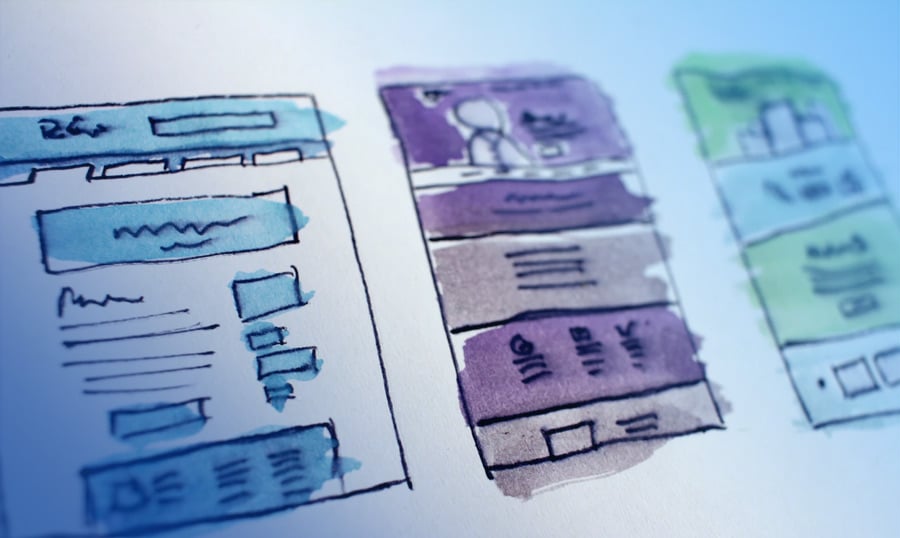Every business has a website. That’s no longer a question. The issue in today’s business world is that very few brands have effective websites that move customers to action. If you can’t confidently say your website is effective, then you need to make some changes.
What Makes an Effective Website?
“Effective” is a subjective word. When it comes to web design templates and development, everyone has their own idea of what this means. But despite the variety in interpretations, there are some universal metrics by which all business websites can be judged. At the end of the day, a successful (or effective) website should engage and convert.
A website should be an element of your brand that interacts with visitors/customers and helps them connect with your brand in a meaningful way. This will look different based on the business, but engagement may look like watching videos, reading content, browsing product listings, or signing up for an email list.
Engagement is a start but isn’t very valuable if it doesn’t lead to conversions. Ultimately, a website is designed to convert curious visitors into paying customers. For an ecommerce website, this means buying something directly from the website. For a service business, this might look like procuring an appointment or getting a prospective customer to call your office.
So, in essence, effective websites are websites that drive meaningful engagement and ultimately convert visitors into customers. If your website is struggling in these areas, you may need to reevaluate what you’re doing.
4 Tips to Make Your Site More Effective
If you look at an industry leading website today compared to just two or three years ago, you’ll notice how different it is – visually and functionally. Successful websites evolve to account for new trends, styles, and capabilities. As you look for ways to make your site more effective, here are some items you’ll want to pay attention to.
Educate Customers
There’s a time and place for developing onsite content that’s “salesy” and persuasive. Product-specific landing pages are a great example of this. But the bulk of your onsite content strategy should be focused on educating customers so they can make informed purchase decisions.
Educating customers through content looks like answering frequently asked questions, addressing pain point topics, and explaining how something works (rather than what it does).
This page from McCombs Supply is a good example. Rather than simply selling customers new appliances, the article helps them understand when to repair versus when to replace. In the long run, this creates educated customers who recognize that the brand has their best interests in mind.
Educational content doesn’t have to be totally neutral. There’s a time and place for including calls-to-action, but the more you can step back and look at the big-picture of the conversion funnel, the better your results will be.
Offer Free Value
The notion of “free” penetrates every language, culture, demographics, and audience. People love the idea of getting something for free and this is the quickest way to boost engagement and drive conversions on your website.
The thing about offering something for free, like a free website template – whether it’s a product sample, ebook, or online course – is that it allows you to engage today and increase your chances of converting tomorrow (or sometime in the future). It’s a double-whammy, so to speak.
Simplify Your Approach
At one point or another, you’ve probably been duped into thinking the best thing you can do for your website is to offer visitors options. But what if this isn’t actually true?
The funny thing about having a lot of choices is that even though we like the idea of it, in practice it tends to paralyze us—to the extent that we will choose to just not act. Studies prove it. This phenomenon is called decision fatigue, and I’m telling you this because, chances are, you’re triggering decision fatigue for many of your visitors without even knowing it.
When a visitor lands on your site, they should know exactly what to do. Every page should have one call-to-action, otherwise, they’ll become overwhelmed.
Overcome Common Friction Points
Finally, make sure you’re overcoming common points of friction that drive website visitors away and/or conjure up negative associations with your brand.
Common website friction points include poor navigation, slow page loading speeds, poor image resolution, and distracting web design.
Summing It All Up
Is your website engaging visitors? And, perhaps more importantly, is it converting visitors into customers? If you can’t answer yes to both of these questions, you’re failing to maximize the value of your website.
Effective websites take time to build, but a steady commitment to ongoing optimization and refinement will help you accomplish your goals and objectives. Now is the time to pay attention and formulate a plan.
Read Also
Right On Schedule: Adding Timeline To Your WordPress Website
Super-easy Way to Create iOS/Android Apps from WordPress Websites
5 Crucial Things To Tackle Prior to Starting Your Own Website in 2018
How to Create a Website for a Coffee Shop Using Themes
The Advantages of Using Vector Graphics for Website Creation
